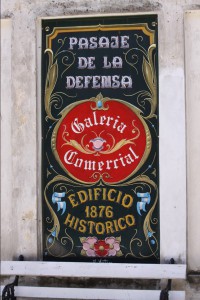The Autonomous City of Buenos Aires
Short description of city main attractions
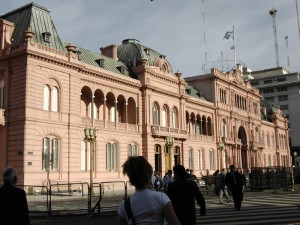 The Historical Centre
The Historical Centre
With its Spanish origins, the historical centre is characterized by the governmental and administrative palaces.
Plaza de Mayo It is the historical centre of the city and scene of political events of the country. Around the traditional Pyramid the “Mothers of Plaza of May” perform their traditional walk every Thursday at 3 p.m. to commemorate and honour those who lost their lives in the “Dirty War.” The square is surrounded with buildings of different epochs, styles and history as the house of government, the Cathedral, and the City Hall (Cabildo) among others.
Argentinean Presidential Palace Casa Rosada It is the headquarters of the different governmental organizations that happened from the city foundation.
City Hall: Cabildo It is a typical example of colonial style construction and today a Museum on the Revolution of May, 1810.
Cathedral It shelters the remains of the General St Martin, the greatest hero of the War of Independence.
Church of San Ignacio It is the Buenos Aires oldest church. It was constructed in 1710 and has examples of violent facts from times past.
Plaza Colon. On this square that use to be closed to the river at the back of Governmental Palace, there see is a sculpture of Christopher Columbus, donated by the Italian government to the of Nation Argentina on the occasion of its 100 th anniversary of his birth.
Av. De Mayo It joins the Plaza of May with the Congress Plaza..It has impressive buildings with dome roofs that were popular in previous time periods.
The Palace of Congress The Palace is the headquarters of the Legislative National Power, an architectural work of great beauty. It borders on a great square that shelters important groups of statues.
The Obelisk The symbol of the city is located a few blocks from the historical center and today is one of the places where citizens go to express their happy moments for sports and political events.
San Telmo
Is a district with a defined identity where the aristocratic families of the colonial era resided until the yellow fever epidemic of 1871. The big houses, were then abandoned, turned into “conventillos”, by the immigrants families, who shared the some house, each family occupying a room. Today on Defensa street there are important antiques shops and every Sunday you can attend the San Telmo Fair, internationally recognized for its ancient objects and originality. The square is surrounded with coffee shops and you can watch a tango show on the street.
Penitentiary museum This museum recreates the old prison of the 19th century and the life of the prisoners at the time.
San Telmo market Inaugurated in 1897, it still conserves the original shape and construction made of a metal framework and ceilings of zinc and glass. Today it still conserve its function with some tourist touch.
Park Lezama It is one of BAs oldest parks and the place where the first foundation of the city took place. It shelters a historical national Museum, in a location surrounded with fountains and sculptures. On the southern side it is possible to notice the original river “cliffs” called “barrancas” and centenary trees all around.
Orthodox-Russian Church It is construction of the 17th century in muscovite style, which is still used for the Orthodox religious services.
Danish church Constructed in 1931 for Lutheran Protestants. Normally it opens to residents for specific popular Danish festivities.
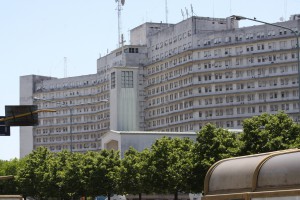
Retiro / Plaza San Martín
This sector of the city is central for the city and marked the life of the country.
Plaza San Martín. Impressive square-park that assembles a wide and varied flora: the “palo borracho” “drunk trees” that bloom with white and huge pink flowers, Kaaradas and Tipas. It is, as Lezama Park, contoured by the old river cliffs and decorated with various sculptural groups dedicated to the General St Martin and the new monument to the fallen in the War of Malvinas in 1982. Surrounding the Plaza, we find beautiful palaces of different styles as the: Officials Circle, Palace Anchorena (Chancery), National Parks Central office, Palace Tornquist (today Hotel Plaza), Kavanagh building, Complex Catalinas Norte.
The Clock tower It was a gift of the English community to the Argentine state for its first century of independence. The tower, with a big clock on the top, is in the middle of the square in front of the train stations of Retiro. Since the Malvinas war, the name changed from the English Tower to Clock tower. From the top of the tower, open to the public, it is possible to observe the port zone and St Martin square in all his grandeur.
Retiro Retiro is the meeting point of the different train stations that departs towards the country and of the bus terminal. It also contains the port area, the port of ferry boats to Uruguay cost,the old Immigrant Hotel and the terminus of bus, the Catalinas Nortes office zone and a sector of the Judicial Power of the Nation.

Puerto Madero
Recognized in 1998 as the newest neighbourhood of the city, its history is related to the BAs port zone. After many years of decadence and abandon, important office and housing buildings were recycled from the original docks. Expensive restaurants, luxury apartments, discotheques, and cinemas are prominent in the area.
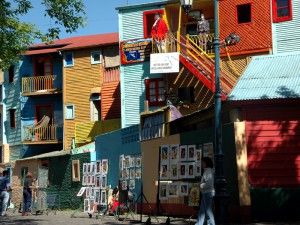
La Boca
It is the first port of Buenos Aires where the immigrants, mainly Italians, settled down. Characteristic “conventillos”, collective houses made of wood and zinc and painted with varied colours, makes it a very picturesque place. The artist Benito Quinquela Martin took these colours in his work and painted the real life of the workers of the port. The street of Caminito and Rochas Return are a classic public walk where the work of the artists can be enjoyed in a colouring and opened environment. Also the Magellan street restored recently offers interesting places to discover.
Museum Quinquela Martin It possesses works of the period of Argentine art of 1900/1950 and mainly of Quinquela Martin himself.
Cultural Center Wall Catalinas Sur The Cultural Centre of Catalinas Sur was founded by the local community to rescue the culture of their ancestors through theatrical works of collective creation. Today they constitute an important theatrical group and perform different plays of their own creation, build the sceneries and they have a musical and marionettes group.
Boca Juniors Stadium The famous “candy box”, where Diego Armando Maradona used to play, forms an integral part of the neighbourhood. On the wall of the stadium, on Brandsen street, there are murals by the Group of Muralistas Sur and of the plastic artist Perez Celis. You can also visit the Museum of the Passion of the Boca where you can re-live famous goals, the vests of the protagonists and also buy original equipment. This football team is said to be “the half plus one of the country”.
“Ferryboat” Bridge It was constructed in 1908 and crosses the Raichuelo towards the Island Maciel.
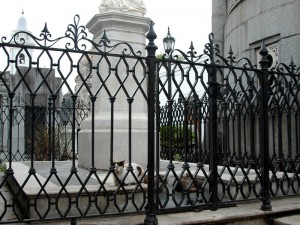
Recoleta
Was a neighbourhood that monks established at the beginning of the 18th century. Today is a residential zone, characterized by French architecture and expensive shops, bars and restaurants. The former convent has been transformed in a Cultural and art exposition centre. In the old cemetery, next to the colonial church of Pilar, there are beautiful sculptural works and statues of distinguished ex-presidents, writers, scientists, sportsmen; one of the most visited one is the Eve Duarte de Peróns, better known as “Evita”.
Plaza Francia Every weekend you can take part in the fair where hand crafted works are abundant and all around there are classic restaurants as bar as “La Biela”, where the car rider Fangio, used to go.
Church of Pilar This church was built in the 18th century with colonial style. One can walk along the former cloisters and appreciate the work of gilding in the lateral altars.
Cultural Centre Recoleta The Culture Centre used to be part of the former cloister, and hosts temporary and permanent exhibitions.
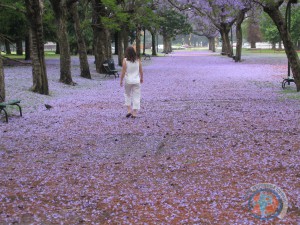
Palermo
It is one of the most traditional neighbourhoods of Buenos Aires. The most important parks of the city were established here in the 19th century with walks and artificial lakes such as: Park February 3, Japanese Garden, Rosedal, Planetario, Racetrack, and the Polo Field. Plaza Serrano today shops, restaurants and bars where contemporary designers meet to enjoy coffee with a dash of milk. Palermo is also the place where the tango had his roots and cradle of legendary “compadritos”.
Botanical garden Founded in the 19th century, the Botanical garden is a green spot next to Plaza Italia with an important garden school.
Zoological garden In the Zoo we find cages built according to the animals original country at the beginning of the twenties Century.



